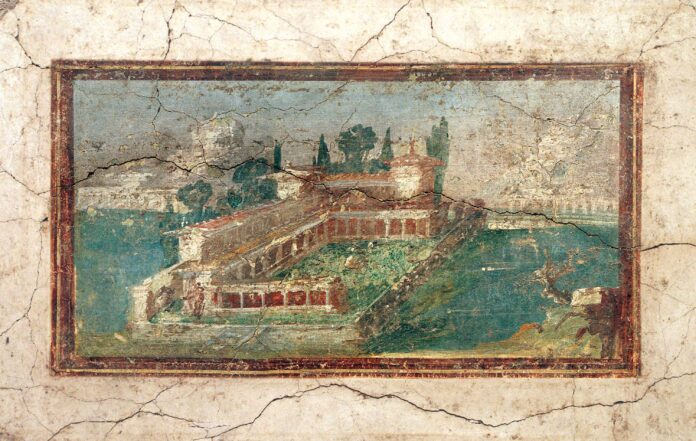
San Antonio Museum of Art, Texas
samuseum.org
through May 21, 2023
The San Antonio Museum of Art has long been admired for its superb collection of antiquities, and now it has organized — and is the sole venue for — a groundbreaking exhibition, Roman Landscapes: Visions of Nature and Myth from Rome and Pompeii. This is the first show mounted in the U.S. to explore landscape scenes as a striking (and little studied) form of ancient Roman art.
On view are more than 65 examples of wall paintings, sculptures, mosaics, cameo glass, and silver vessels created in Roman Italy between 100 BCE and AD 250. These works have been gathered from around the world — including Italy, France, and Germany — many coming to the U.S. for the very first time. Several years in the making, the project is grounded in original research undertaken by SAMA curator Jessica Powers.
Most of us readily recognize ancient Roman statues depicting gods and heroes, or scenes of battle and ritual carved into friezes or adorning pottery. But few of us have had the opportunity to experience Roman wall paintings in person, with their fluid, almost impressionistic brushwork and somewhat unexpected use of bird’s-eye perspective. Many offer an imaginary vision of a countryside dotted with seaside villas and rural shrines, where gods and mythological heroes mingle with mortal travelers, herdsmen, and worshippers.
Powers notes, “The artistic innovation of showing human figures within visually dominant natural settings began during the tumultuous final decades of the Roman Republic, as civil war in Italy resulted in changes in land ownership and territorial expansion continued in the eastern Mediterranean. In that context, landscape imagery was particularly resonant because of its portrayal of an idealized rustic past and its emphasis on traditional Roman religion. Roman authors recognized the novelty of these images, though the concept of a ‘landscape’ scene did not arise until the Renaissance.”
The exhibition has five thematic sections: Garden Landscapes, Coastal Views & Cultivated Landscapes, Sacred Landscapes, The Dangerous Landscapes of Myth, and Landscapes in the Tomb. Illustrated here is a coastal view that was excavated at the Villa San Marco near ancient Stabiae, just south of Pompeii. Depicting an elaborately constructed villa on a platform that extends into the sea, it celebrates the wealth and power of someone capable of paying for such a construction, as well as the engineering mastery of the Romans, whose buildings grew in structural complexity and sophistication.
Roman Landscapes is accompanied by a lavishly illustrated scholarly catalogue, and Trinity University (located nearby) has dedicated a springtime lecture series to the exhibition.







